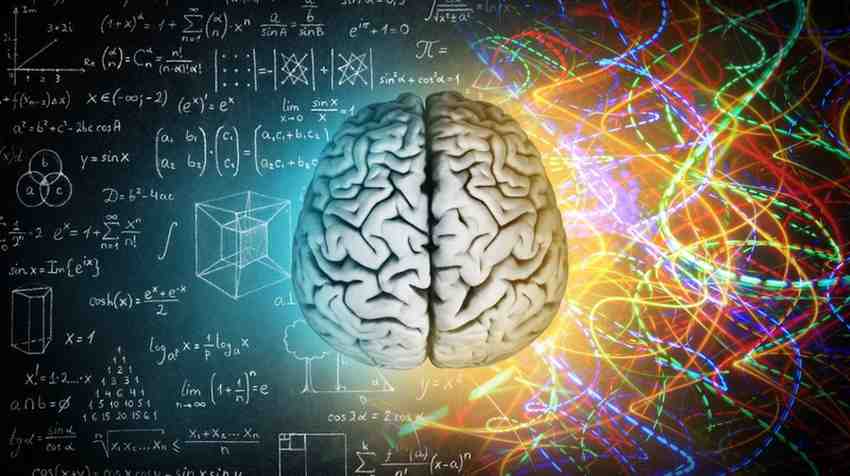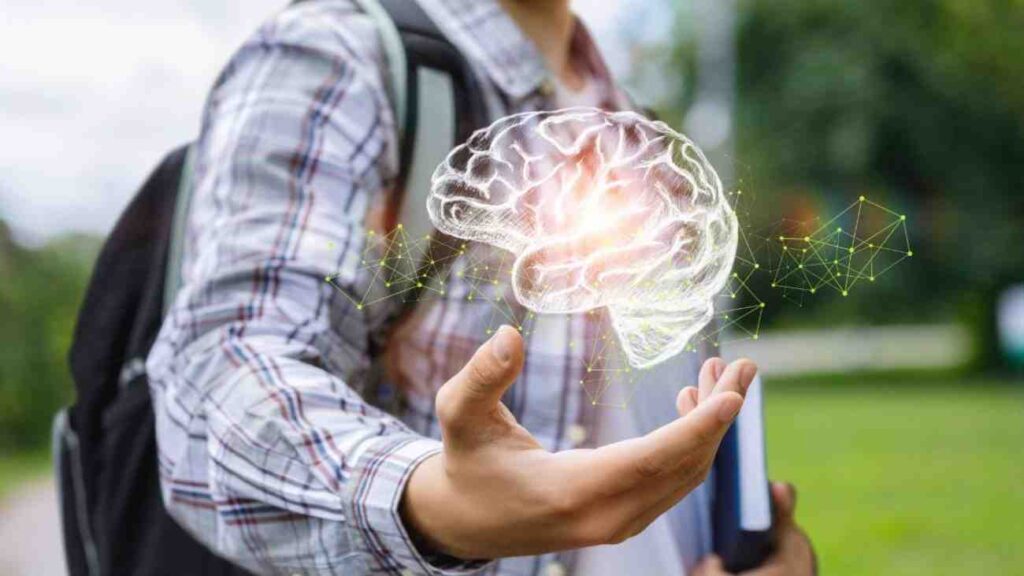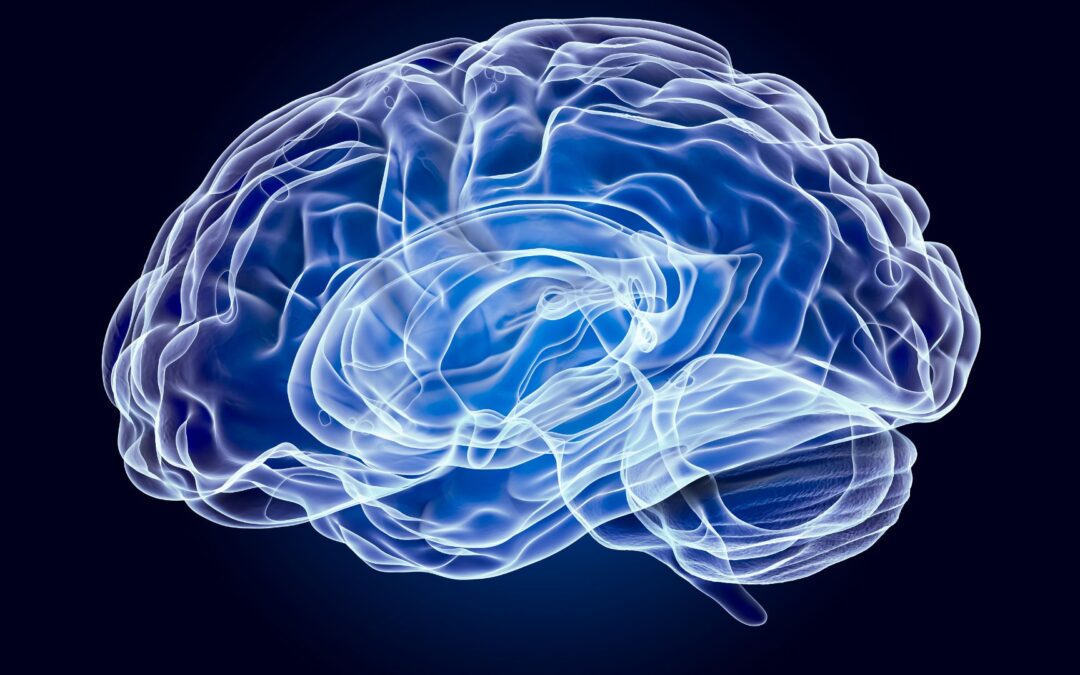loading...

by Tim Cassidy | Sep 17, 2024 | Educational
Neuropsychotherapy is a rapidly developing field that bridges the gap between neuroscience and psychotherapy. By integrating findings from brain science, this approach offers more effective interventions for mental health issues. For therapists and counselors seeking new ways to enhance their practice, understanding these emerging techniques is essential.
Let’s explore some of the most promising approaches within neuropsychotherapy and how they can be applied to support clients more effectively.
The Basics of Neuropsychotherapy
At its core, neuropsychotherapy focuses on how psychological processes are rooted in brain function. It combines insights from neuroscience with psychotherapeutic techniques. And it allows practitioners to work with the brain’s natural tendencies rather than against them. This makes therapy more efficient and tailored to individual needs.

For example, neuropsychotherapy might use knowledge about neural plasticity—the brain’s ability to reorganize itself by forming new neural connections throughout life. This understanding allows therapists to create interventions to harness the brain’s capacity for change. As a result, this offers clients a path to healing that aligns with their brain’s natural processes.
Ramp Up Your Skills in Neuroscience Therapy
Imagine you could earn nearly 30 credits in just 72 hours! It’s a possible goal, thanks to Online CE Credits’ online courses in neuroscience available 24/7. These accredited programs grant you access to passionate and seasoned instructors. They help you apply the lessons instantly.
Upgrade your continuing education by enrolling in the programs below:
Using Neuroplasticity for Healing
One of the most compelling aspects of neuropsychotherapy is neuroplasticity. Traditional therapy often focuses on managing symptoms, but neuropsychotherapy takes it a step further by directly targeting the underlying neural pathways that contribute to emotional and behavioral patterns.
Consider how trauma impacts the brain: traumatic experiences can lead to deeply ingrained neural circuits that perpetuate anxiety, hypervigilance, or depressive states. Techniques like Eye Movement Desensitization and Reprocessing (EMDR) and somatic therapies work by helping clients create new, healthier neural pathways.
These methods encourage the brain to ‘rewire’ itself, reduce the emotional intensity of traumatic memories, and decrease retraumatization.
Therapist Insight: “I’ve found that incorporating techniques that tap into neuroplasticity, like EMDR, often leads to quicker breakthroughs for clients who have felt stuck in traditional talk therapy.”
Emotional Regulation through Mindfulness and Meditation
Mindfulness and meditation aren’t new concepts, but their integration into neuropsychotherapy has brought a fresh perspective. Regular mindfulness practice can alter brain structures and functions, particularly in areas related to emotion regulation, stress response, and self-referential processing.
Neuroimaging studies have shown that consistent mindfulness practice thickens the prefrontal cortex. It’s a brain area that is involved in planning, problem-solving, and emotional regulation. Also, the therapy shrinks the amygdala, the brain’s fear center.
This physiological change can be incredibly powerful for clients struggling with anxiety, PTSD, or chronic stress. By helping clients understand how mindfulness affects their brain, therapists can motivate them to adopt practices that facilitate emotional regulation and mental clarity.
The Role of Memory Reconsolidation in Therapy
Memory reconsolidation is another innovative technique in neuropsychotherapy. When a memory is recalled, it becomes malleable and can be altered before it is stored again. This process allows therapists to work with clients to ‘update’ distressing memories with new, less threatening information.
For instance, a person with social anxiety may have an entrenched memory of a humiliating experience that triggers anxiety in social settings. Through memory reconsolidation techniques, therapists can help the client recall the memory in a safe therapeutic environment.
They can also introduce new emotional experiences that contradict the distressing aspects of that memory. This can significantly reduce the emotional charge of the memory, leading to decreased symptoms in the client’s everyday life.
Therapists can use techniques such as imaginal exposure or integrating contradictory positive memories to alter the emotional weight of a traumatic memory.
The Power of Neurofeedback
Neurofeedback is a therapeutic technique that offers clients real-time feedback on their brainwave activity, helping them learn how to self-regulate their mental states. By monitoring brain activity through EEG and displaying it visually, clients can see how their thoughts and emotions affect their brain. This empowers them to learn techniques to shift their mental states.
This method is particularly useful for conditions like ADHD, PTSD, anxiety, and depression. Neurofeedback has been shown to help clients achieve a state of relaxed focus, which can be difficult to attain in a traditional therapeutic setting.
Over time, neurofeedback enables clients to gain greater control over their brainwave patterns, leading to more sustainable emotional and cognitive regulation.
The Integration of Somatic Approaches
Neuropsychotherapy also recognizes the critical connection between the mind and body. Somatic approaches emphasize the importance of body awareness and the physical experience of emotions. Since the brain and body are interconnected, working with bodily sensations can directly affect brain processes.
Approaches like Somatic Experiencing (SE) or Sensorimotor Psychotherapy focus on helping clients tune into their body’s sensations to release trauma stored at the physiological level. By allowing clients to feel safe in their bodies. These methods can facilitate a deeper healing process for those struggling to articulate their emotions verbally by allowing clients to feel safe in their bodies.
You can consider incorporating somatic exercises like grounding or deep breathing to help clients who may be dissociated or disconnected from their physical experience.
The Application of Polyvagal Theory
Polyvagal Theory, developed by Dr. Stephen Porges, has gained traction in the field of neuropsychotherapy. It describes how the autonomic nervous system responds to safety and danger cues. Understanding these responses can guide therapists in helping clients move from a state of threat (fight, flight, or freeze) to a state of safety and connection.
By helping clients identify when they are in a state of hyperarousal (fight or flight) or hypoarousal (freeze), therapists can employ techniques to bring them back into a “window of tolerance.” This lets them process emotions and experiences more effectively.

The therapy involves grounding exercises, breathwork, or paced rhythmic activities that help regulate the nervous system. Encourage clients to develop a “toolbox” of strategies that help them recognize and shift their nervous system state to improve emotional regulation and resilience.
Integrating Technology and Virtual Reality
Virtual reality (VR) is a cutting-edge tool that has begun to find its place in neuropsychotherapy. VR allows clients to experience controlled simulations of situations that trigger anxiety or trauma. This exposure, combined with real-time therapist guidance, can be highly effective in reducing symptoms and improving emotional resilience.
For example, VR can simulate social situations for clients with social anxiety, allowing them to practice social skills in a safe environment. Similarly, clients with PTSD can use VR to gradually confront traumatic memories with the support of their therapist. This reduces the emotional impact of these memories over time.
Studies have shown that VR-based interventions can significantly improve outcomes for clients with PTSD, anxiety, and specific phobias. As a result, it can provide a safe yet immersive space for exposure therapy.
Tailoring Techniques To Individual Clients
Every brain is unique, and what works for one client may not work for another. This is why a personalized approach is essential in neuropsychotherapy. Therapists must be attuned to the specific needs, preferences, and neurobiological makeup of each client to select the most appropriate interventions.
Combining techniques such as mindfulness, neurofeedback, memory reconsolidation, and somatic therapy allows for a flexible approach adaptable as the client progresses. The key is to remain curious and open to integrating new, evidence-based techniques as they become available.
Embrace Neuropsychotherapy To Transform Your Therapy
Neuropsychotherapy is more than just a trend; it’s a new way of understanding the brain and how it relates to emotional and mental health. By embracing these innovative techniques, therapists can provide more effective and tailored care, helping clients not just to cope but to thrive.
Rewiring the brain through neuroplasticity, using mindfulness, or cutting-edge technology like virtual reality can transform how we think about healing the mind. Ready to move the needle in your clinical practice? Sign up for an account now!

by Tim Cassidy | Sep 17, 2024 | Certificate
Understanding criminal behavior has long fascinated psychologists, criminologists, social workers, and law enforcement professionals. Traditional criminology focuses on social, environmental, and economic factors influencing crime. However, neurocriminology is a more recent field that aims to understand criminal behavior by looking at the brain’s structure and function.
Neurocriminology blends neuroscience and criminology, examining how brain abnormalities, genetics, and neurological processes might contribute to criminal behavior. This field presents an innovative approach to understanding the criminal mind, with significant implications for predicting and preventing crime.
The Basics of Neurocriminology
Neurocriminology is based on the idea that certain brain structures and functions may predispose individuals to criminal behavior. It involves studying brain imaging, genetics, and neuropsychological tests to identify patterns that may be associated with violent or antisocial behavior.
Researchers in this field focus on areas such as the prefrontal cortex, the amygdala, and neurotransmitter systems. For example, the prefrontal cortex is involved in decision-making, impulse control, and social behavior. Abnormalities or dysfunctions in this area can be linked to aggressive and impulsive behavior.
The Dartmouth Undergraduate Journal of Science says a study found that there was a 4.3-fold increase in reoffending among parolees with diminished activity in the anterior cingulate cortex. It’s a brain region connected to executive function.

Also, genetic factors are also considered in neurocriminology. Studies have shown that some genes might influence traits such as aggression, impulsivity, and fearlessness. And these traits could increase the risk of criminal behavior when some environmental factors occur.
The “warrior gene,” also known as MAOA-L, is often highlighted in discussions about genetics and aggression. While having this gene does not guarantee criminal behavior, it may predispose individuals to violence when combined with adverse environments.
Master Effective Interventions in Neurocriminology
Want to advance your therapy in neurocriminology and fulfill your licensure requirements? Look no further! Onlince CE Credits has a treasure trove of practical and nationally approved certifications at fraction of the cost. Earn more than 10 credits by enrolling in the courses below:
The Role of Brain Imaging in Understanding Criminal Behavior
Advancements in brain imaging technology, such as functional magnetic resonance imaging (fMRI) and positron emission tomography (PET), have allowed researchers to explore the neural underpinnings of criminal behavior. These imaging techniques help visualize brain activity in real-time and examine how different brain regions communicate and respond to stimuli.
One landmark study used brain imaging to compare the brains of violent criminals with those of non-violent individuals. The study found that violent criminals often showed reduced activity in the prefrontal cortex, the part of the brain associated with impulse control and moral judgment. Such findings suggest a biological basis for impulsive and aggressive behavior, challenging the notion that criminal actions are purely a result of social or moral failing.
In another study, researchers used PET scans to study the amygdala, the brain’s emotional center responsible for processing fear and aggression. They discovered that criminals with a history of violent behavior had an overactive amygdala and an underactive prefrontal cortex. It could explain their inability to regulate emotions effectively.
These findings indicate that the structure and function of the brain can play a significant role in predisposing someone to criminal behavior.
The Implications for Early Intervention
One of the most promising aspects of neurocriminology is its potential for early intervention. If specific neurological markers can be identified that indicate a predisposition to violent behavior, there could be opportunities for early detection and intervention. This could include personalized treatment plans that focus on behavioral therapy, medication, or a combination of both to help mitigate these tendencies before they manifest as criminal behavior.
Research has suggested that children from high-risk environments displaying early signs of aggressive or antisocial behavior could benefit from interventions that focus on enhancing cognitive and emotional regulation skills. For instance, programs targeting impulse control, empathy development, and stress management have shown promise in reducing future criminal behavior.
Neurocriminology could inform these programs by identifying which children might benefit the most from certain types of interventions, making them more effective.
Neurocriminology in the Courtroom
The use of neurocriminology in legal settings is a growing area of interest. Some defense attorneys have started to use brain imaging and neurobiological evidence to argue for reduced sentences, claiming that their clients’ brains are “wired” for impulsivity and aggression, diminishing their culpability.
While this approach has led to reduced sentences in some cases, it also raises ethical concerns. If we start seeing criminal behavior as a consequence of brain structure, it challenges the traditional legal notion of free will and personal responsibility.
Forensic psychologists and mental health professionals need to navigate this complex landscape carefully. They must balance understanding the neurobiological factors contributing to criminal behavior with the ethical and legal implications of using such information in court.
The potential to identify neurobiological risk factors for crime should not overshadow the importance of social and environmental factors, nor should it absolve individuals of their actions.
Treatment and Rehabilitation: A Neuro-criminological Approach
Neurocriminology offers new avenues for treating and rehabilitating offenders. Traditional rehabilitation programs often focus on behavioral modification, education, and social skills training. However, if certain criminal behaviors are linked to brain abnormalities or dysfunctions, there must be tailored approaches that address these specific issues.
For instance, cognitive behavioral therapy (CBT) has been shown to help modify neural pathways associated with negative thought patterns and behaviors. Neurofeedback is another promising area that uses real-time brain activity monitoring to teach self-regulation of brain function. By providing offenders with tools to regulate their brain activity, neurofeedback could help reduce impulsive and aggressive behavior.
Pharmacological interventions are also being explored. Some studies suggest that medications affecting neurotransmitter levels, such as selective serotonin reuptake inhibitors (SSRIs), could help reduce aggression and impulsivity in individuals with certain neurobiological risk factors. However, the use of medication for managing criminal behavior is controversial. It must be approached with caution, keeping in mind ethical considerations and potential side effects.
Challenges and Controversies in Neurocriminology
While neurocriminology provides a new lens through which to view criminal behavior, it has some limitations. One major concern is the potential for neuro-criminological findings to be misused or misunderstood. For example, if a biological predisposition to criminal behavior is identified, individuals with certain genetic markers or brain abnormalities could be stigmatized or discriminated against.
This could lead to ethical and legal challenges regarding privacy, consent, and the potential for abuse of such information.

Another challenge is distinguishing correlation from causation. While certain brain patterns may be associated with criminal behavior, it does not necessarily mean they cause it. Environmental, social, and psychological factors may influence criminal behavior. So reducing criminal behavior to a purely neurological or genetic explanation oversimplifies a complex issue.
Mental health professionals working in forensic settings need to be cautious about interpreting and applying neuro-criminological research. It is crucial to integrate neuro-criminological findings with insights from psychology, sociology, and criminology to create a more comprehensive understanding of criminal behavior.
The Future of Neurocriminology: Where Do We Go from Here?
As technology advances, the field of neurocriminology is likely to grow, providing deeper insights into the biological causes of criminal behavior. The potential to use neurobiological data to predict criminal behavior is both exciting and daunting. While early detection and targeted interventions could help reduce crime rates, but there is also the risk of infringing on civil liberties and privacy.
For mental health professionals, understanding neurocriminology’s role in criminal behavior offers a valuable perspective when working with at-risk individuals or those in the criminal justice system. This knowledge can inform more effective assessment, treatment, and rehabilitation approaches. However, it is essential to approach this field with a critical mind, acknowledging its limitations and ethical challenges.
Take Advantage of Neurocriminology
Ultimately, neurocriminology represents a new frontier in understanding crime, one that could reshape our approaches to prevention, intervention, and rehabilitation. By blending neuroscience with psychology and criminology, this field has the potential to revolutionize how we think about and address criminal behavior—offering new pathways for both research and practice. Take a bold step in your therapy and create an account with Online CE Credits.

by Tim Cassidy | Sep 17, 2024 | Educational
When considering the best approach to therapy, many mental health professionals are often caught between different modalities. Traditional therapies, such as Cognitive Behavioral Therapy (CBT), psychodynamic therapy, and person-centered approaches, have been a cornerstone of mental health treatment for decades.
However, as neuroscience advances, neuropsychotherapy has gained attention for its emphasis on understanding and healing the brain’s functioning directly. This method considers how our brain’s neural pathways and structures influence mental health and utilizes this knowledge in therapy sessions.
Let’s examine what neuropsychotherapy offers compared to traditional therapy methods and why this emerging field might represent a shift in treating psychological issues.
Understanding Traditional Therapy: A Focus on Mind and Behavior
Traditional therapy involves various approaches that help individuals understand their thoughts, emotions, and behaviors to promote healthier patterns. Here’s a quick look at some well-known types of traditional therapy:
Cognitive Behavioral Therapy (CBT): Perhaps the most widely practiced traditional therapy, CBT helps clients identify and challenge distorted thoughts and beliefs that lead to unhealthy behaviors and emotional distress. The emphasis is on the present moment and developing coping strategies to manage life’s challenges.

Psychodynamic Therapy: This approach dives into the unconscious mind, exploring how early life experiences and internal conflicts influence current behavior. Therapists using this model enable clients to uncover hidden emotions and unresolved conflicts that might contribute to their distress.
According to the American Psychology Association (APA), psychodynamic interventions are effective to treat stress-related physical conditions, anxiety, depression, and pain.
Humanistic Therapies: Approaches like person-centered therapy focus on self-exploration and self-acceptance. The therapist’s role is to provide a non-judgmental space where clients can express themselves freely and work toward personal growth.
Each of these therapies operates under the belief that changes in thoughts, emotions, and behaviors can significantly impact a person’s mental health and overall well-being. However, they often fall short in addressing the biological basis of mental health conditions. This is where neuropsychotherapy steps in.
What Is Neuropsychotherapy? An Integration of Neuroscience and Psychology
Neuropsychotherapy is an approach that integrates findings from neuroscience into the therapeutic process. At its core, it states that understanding the brain’s functions can help better address mental health issues.
Traditional therapy often focuses more on the cognitive or emotional aspects of a person’s problems. On the other hand, neuropsychotherapy looks at how neural networks and brain structures shape thoughts, emotions, and behaviors.
Here are some key features that set neuropsychotherapy apart:
Brain-Based Understanding: Neuropsychotherapy relies heavily on insights from neuroscience to understand how different brain areas affect mental health conditions.
A neuropsychotherapist might approach treatment by considering how the amygdala affects fear and anxiety, the prefrontal cortex influences decision-making, and the hippocampus affects memory and learning.
Neuroplasticity and Healing: This approach focuses on the concept of neuroplasticity—the brain’s ability to reorganize itself by forming new neural connections throughout life. Neuropsychotherapy aims to utilize this capacity for change to help clients form healthier patterns of thought, behavior, and emotion.
Integrated Techniques: Neuropsychotherapy does not reject traditional therapeutic techniques. Instead, it integrates them with a neuroscience-based understanding. For instance, neuroscience may incorporate mindfulness by focusing on its impact on brain structures like the anterior cingulate cortex. This brain element is associated with self-regulation and emotional processing.
Renew Your Therapy To Treat Mental Health Conditions With Neuropsychotherapy
The British Pyschology Society also agrees that brain areas such as the amygdala, hippocampus, and related neural networks are critical in treating PTSD. For this reason, a course in neuropsychology can be a game changer for therapists. It uncovers the latest and most effective methods to heal trauma patients.
Thankfully, Onlince CE Credits offers actionable online courses to enable mental health professionals to stay ahead of the curve. Here are some programs to consider:
Key Differences: How Neuropsychotherapy and Traditional Therapy Differ in Practice
While both neuropsychotherapy and traditional therapy aim to alleviate psychological distress, their methods and underlying principles differ significantly.
Focus on Brain vs. Mind: Traditional therapy often focuses on the “mind”—thoughts, beliefs, and emotions. However, neuropsychotherapy directs attention to the “brain”—neural networks, neurotransmitters, and neuroplasticity. This difference might seem subtle but has profound implications for treatment.
A neuropsychotherapist might explore how repeated experiences (like trauma) have wired the brain in specific ways and then use interventions that specifically aim to “rewire” these patterns.
Role of Science: In neuropsychotherapy, scientific insights about brain functioning are integral to the treatment process. Techniques such as biofeedback, neurofeedback, and brain mapping provide clients with real-time information about their brain activity. This scientific basis can help demystify mental health issues for clients, making them feel more in control of their healing process.
Treatment Customization: Traditional therapy often relies on standardized approaches or protocols that apply broadly across various populations. In contrast, neuropsychotherapy customizes an approach that considers each client’s unique neurological makeup, personal history, and how the brain has adapted to experiences.
Case Example: Applying Neuropsychotherapy and Traditional Therapy in Practice
To better understand the difference in these approaches, consider the case of a client named Sarah, a 32-year-old woman struggling with anxiety and panic attacks.
Traditional Therapy Approach: In a traditional therapeutic setting, a CBT therapist might work with Sarah to identify triggers for her panic attacks and develop strategies to challenge irrational thoughts or avoidant behaviors. The emphasis would be on restructuring her thought patterns and exposing her to anxiety-provoking situations gradually to reduce fear.
Neuropsychotherapy Approach: A neuropsychotherapist might start by explaining how Sarah’s brain has been conditioned to respond to stress with panic due to repeated activation of the amygdala. Using techniques like mindfulness and neurofeedback, they might help Sarah learn to regulate her brain’s activity. This increases connectivity between the amygdala and the prefrontal cortex.
The focus would be on “rewiring” the brain’s pathways to create more adaptive responses to stress.
Both approaches can be effective, but neuropsychotherapy may provide Sarah with insight into anxiety’s biological basis. In this way, she might be empowered to make progress in her recovery.
When to Consider Neuropsychotherapy Over Traditional Therapy
Mental health professionals might consider neuropsychotherapy when traditional methods seem to be less effective. Or when clients express an interest in understanding the brain-based aspects of their conditions. Here are some scenarios where neuropsychotherapy might be particularly beneficial:
Trauma and PTSD: Trauma can have lasting effects on the brain’s structure and function, often leading to hyperarousal, flashbacks, and emotional dysregulation. Neuropsychotherapy can provide specific interventions aimed at calming the overactive amygdala and strengthening the connections between the emotional and rational parts of the brain.
Chronic Anxiety and Depression: These conditions are often associated with long-term changes in brain chemistry and structure. Neuropsychotherapy can help clients understand these changes and use brain-based strategies to foster recovery.
Neurodevelopmental Disorders: For conditions like ADHD or Autism Spectrum Disorder, where neurological differences play a significant role, neuropsychotherapy can offer strategies that are more aligned with the client’s neurobiological profile.
Interest in a Science-Based Approach: Some clients are drawn to the idea of therapy that is grounded in the latest scientific research. Neuropsychotherapy can appeal to those who want to see concrete evidence of change and understand the mechanisms behind their mental health struggles.
Challenges and Considerations in Neuropsychotherapy
While neuropsychotherapy offers promising possibilities, it is not without its challenges. One of the most significant barriers is for therapists to have a solid understanding of neuroscience. And this requires ongoing education and training.

This approach also involves tools like neurofeedback and brain mapping, which can be costly and inaccessible to all clients or practices.
Additionally, some critics argue that neuropsychotherapy might overemphasize mental health’s biological aspects. As a result, therapists may neglect the therapeutic relationship and socio-cultural factors that affect mental health.
However, many professionals argue that integrating these elements rather than viewing them as mutually exclusive is crucial.
The Future of Therapy: A Combined Approach?
As neuroscience continues to change, the boundaries between different therapeutic approaches may become increasingly blurred. It may be possible to integrate traditional therapy with neuro-psychotherapeutic methods in the future.
By incorporating brain-based knowledge into traditional therapy, mental health professionals can offer clients richer, more tailored therapeutic experiences.
For mental health practitioners, understanding both approaches’ strengths and limitations can open up new avenues for more personalized, effective care.
Cash in on Neuropsychotherapy Courses
Neuropsychotherapy represents an exciting development in the field, providing new tools and perspectives for healing the brain and mind. Also, the client’s needs, preferences, and specific conditions and the therapist’s training and expertise determine whether the method is suitable.
As we continue to learn more about the brain and its impact on mental health, the potential to refine and expand these therapeutic methods offers hope for more effective treatment outcomes. Online CE Credits allows you to upgrade yourself and earn relevant credits without breaking the bank. Invest in your professional development today.

by Tim Cassidy | Sep 10, 2024 | Certificate
EMDR (Eye Movement Desensitization and Reprocessing) has long been a trusted approach in trauma therapy, known for its effectiveness in helping individuals process and heal from traumatic experiences. But as with all therapeutic techniques, EMDR has continued to develop, and EMDR 2.0 is the latest evolution, offering new methods that enhance its effectiveness.
EMDR 2.0 isn’t a total overhaul of the original method but rather an enrichment. It builds on the solid foundation of traditional EMDR while incorporating advancements in our understanding of trauma, memory, and neurobiology. For therapists, this presents an opportunity to provide even more nuanced and impactful care for clients dealing with trauma.
What Is EMDR 2.0?
EMDR 2.0 retains the core principles of standard EMDR but integrates additional elements designed to speed up and deepen the processing of traumatic memories. This enhanced version leverages recent research in neuropsychology and trauma to offer more effective interventions, particularly for clients with complex trauma.
One of the most notable aspects of EMDR 2.0 is its emphasis on maximizing the efficiency of bilateral stimulation (BLS). While traditional EMDR typically uses side-to-side eye movements, EMDR 2.0 encourages a more tailored approach, experimenting with variations in speed, intensity, and direction of the BLS. This fine-tuning aims to better match the client’s unique needs and how their brain processes information, potentially leading to a faster resolution of trauma.
Key Components of EMDR 2.0
EMDR 2.0 introduces several key enhancements that set it apart from its predecessor. Understanding these can help therapists make informed decisions about how to incorporate this method into their practice.
Enhanced Bilateral Stimulation:
Traditional EMDR relies heavily on side-to-side eye movements as the primary form of BLS. EMDR 2.0 expands on this by experimenting with the rhythm, direction, and speed of the eye movements or taps, adjusting them to better engage the brain’s processing systems. This customization can make the therapy more effective for individuals who may not have responded as well to the standard protocols.
Modified Target Planning:
EMDR 2.0 introduces more flexible approaches to selecting and processing target memories. Traditional EMDR often works through a hierarchy of traumatic events, starting with the most distressing. The new approach, however, allows for more adaptive sequencing, prioritizing targets based on the client’s current needs and readiness. This can be particularly beneficial for clients with multiple traumas or those who have difficulty accessing certain memories.
Somatic Integration:
Another enhancement in EMDR 2.0 is the greater integration of somatic experiences. The approach places more emphasis on connecting the mind and body, recognizing that trauma is often stored in the body as well as the mind. By incorporating body-based techniques and paying closer attention to physical sensations during sessions, therapists can help clients release trauma more fully.
Neurobiological Insights:
The latest research into how trauma affects the brain has informed the development of EMDR 2.0. This version places a stronger emphasis on the neurological underpinnings of trauma, helping therapists to target their interventions more precisely. This scientific grounding can make the therapy more understandable for clients, who may appreciate the clear explanations of how the process works.
Why EMDR 2.0 Matters in Trauma Therapy
Trauma is complex, and no two clients present with the exact same needs. EMDR 2.0’s ability to offer more personalized and adaptive interventions makes it a powerful tool for addressing a wide range of trauma-related issues.
For therapists, the ability to adjust the BLS to suit the individual’s processing style means that sessions can be more efficient. Clients may reach breakthroughs more quickly, and the therapy can be tailored to avoid overwhelming them with too much intensity or moving too slowly. This flexibility can be particularly helpful for clients with complex PTSD, where standard EMDR might struggle to produce results as quickly.

For example, one study showed significant improvement in PSTD treatment when Reprocessing EMDR 2.0 was combined with other therapy interventions.
The modified target planning is also a significant advantage. Trauma therapy can be unpredictable; memories and emotions can emerge in unexpected ways. EMDR 2.0’s flexible approach to target planning allows therapists to adjust on the fly, responding to the client’s needs in real-time. This adaptability can make sessions more effective and help prevent clients from feeling stuck or frustrated with the process.
Implementing EMDR 2.0 in Your Practice
If you’re already trained in EMDR, incorporating the principles of EMDR 2.0 might be a natural progression. The good news is that it doesn’t require abandoning the methods you already know. Instead, it’s about expanding your toolkit, refining your approach, and staying updated with the latest research.
Continuing education is essential here. Seek out training specifically designed for EMDR 2.0. These courses can provide you with hands-on experience and a deeper understanding of how to apply these techniques effectively. Additionally, consulting with peers who have already integrated EMDR 2.0 into their practice can be invaluable. They can offer practical advice, share their experiences, and help you navigate any challenges.
It’s also important to communicate these changes with your clients. Some may be apprehensive about new techniques, especially if they’ve had positive experiences with traditional EMDR. Take the time to explain how EMDR 2.0 works, why you’re adopting it, and how it could benefit their therapy. Clear communication can help build trust and encourage clients to engage with the process.
Level Up Your EMDR Therapy Skills Through Online Education
Want to stay ahead of the curve in your field? Our comprehensive EMDR courses are designed to equip you with the latest techniques and strategies. Master traditional EMDR methods and effectively address trauma in your clients. Our affordable online programs offer flexibility and convenience without compromising quality.

Invest in your professional growth and unlock the full potential of EMDR. Enroll today in the programs below and discover how our programs can enhance your therapeutic practice.
Potential Challenges and Considerations
As with any therapeutic approach, EMDR 2.0 isn’t without its challenges. Some clients may find the more intense BLS unsettling at first, especially if they’re used to the slower pace of traditional EMDR. It’s crucial to monitor their responses closely and be ready to adjust the intensity to ensure they remain comfortable and engaged.
Another consideration is the increased focus on somatic integration. Not all clients are comfortable with or ready for body-based work. It’s important to assess each client’s readiness and introduce these elements gradually, respecting their boundaries and comfort levels.
Lastly, staying up-to-date with the latest research and developments in EMDR 2.0 is vital. The field of trauma therapy is continually advancing, and what we know today may evolve further in the coming years. Regularly participating in training and staying connected with the broader EMDR community will help ensure that your practice remains effective and evidence-based.
The Future of Trauma Therapy with EMDR 2.0
The enhancements offered by EMDR 2.0 represent a significant step forward in trauma therapy. For therapists, this approach provides new tools to help clients process trauma more efficiently and effectively. For clients, it offers the promise of deeper healing and the potential to move past trauma more quickly.
Integrating EMDR 2.0 into your practice may require some adjustment, but the benefits it can bring to your clients make it a worthwhile endeavor. You can continue to provide the best care for those who turn to you for healing by staying informed, seeking out training, and being open to new techniques.
Integrate EMDR 2.0 Into Your Clinical Practice
The advancement of EMDR into its 2.0 iteration reflects a commitment to improving therapeutic outcomes in trauma care. You can help clients reclaim their lives from the grips of trauma by embracing these changes. Seize the opportunity to expand your horizons in EMDR via Online CE Credits.

by Tim Cassidy | Sep 10, 2024 | Educational
The Pain Protocol, a specific application within Eye Movement Desensitization and Reprocessing (EMDR) therapy, offers a targeted approach for addressing chronic pain, an area often overlooked or underestimated in its psychological impact.
Want to help your clients manage chronic pain? Enroll in an EMDR certification program from continuing education experts without breaking the bank.
Why EMDR for Pain?
Chronic pain isn’t just a physical issue; it’s often intertwined with emotional distress, trauma, and unresolved psychological conflicts.
According to the U.S. Pain Foundation, nearly 21% of American adults—51.6 million—suffer chronic pain that lasts over three months. Among them, 17.1 million suffer from severe chronic pain that substantially hinders their ability to work or participate in daily activities.
Traditional pain management techniques primarily address physical symptoms but may neglect the emotional and cognitive components. EMDR therapy, known for its effectiveness in trauma treatment, can bridge this gap by directly targeting the distress associated with chronic pain.
The EMDR Pain Protocol is not about diminishing or ignoring the physical aspect of pain but rather about addressing the psychological factors that exacerbate or maintain pain. Many clients with chronic pain report significant improvements in their pain perception and emotional well-being after undergoing EMDR treatment.
Understanding the Connection Between Pain and Trauma
Many therapists encounter clients who have experienced trauma, whether it’s related to a specific event or accumulated over time. These traumas often manifest physically, contributing to chronic pain. For instance, a client with a history of abuse might develop chronic back pain with no clear medical explanation. The pain persists, and traditional treatments provide little relief. This scenario is where the EMDR Pain Protocol can make a substantial difference.

When using EMDR for pain, you’re not just treating the pain itself but exploring the deeper, often hidden emotional roots that may be fueling the pain. These roots could include past trauma, unresolved grief, or even current stressors that the client hasn’t fully processed.
Implementing the EMDR Pain Protocol: Practical Steps
Before integrating the EMDR Pain Protocol, ensure that your client is a good candidate for this approach. The client should have a stable support system, an understanding of EMDR therapy, and a willingness to engage in the process. As with all EMDR treatments, it’s crucial to begin with thorough client preparation.
Assessment Phase:
Start by gathering a detailed history of the client’s pain experience. Understand the onset, triggers, and any previous treatments. This phase also includes identifying any potential traumas or emotional stressors linked to the pain. Establishing a baseline for pain perception can help measure progress.
Target Selection:
Determine the specific memories or events that may be contributing to the client’s pain. These targets might not always be directly related to the physical pain but could be events that are emotionally linked to the pain experience. For instance, a car accident survivor with chronic neck pain might not only need to process the trauma of the accident but also related fears and anxieties that have developed since.
Desensitization and Reprocessing:
In this phase, the client processes the selected targets using standard EMDR protocols. What sets the Pain Protocol apart is the inclusion of body awareness throughout the process. Encourage the client to notice changes in their pain as they process each target. Often, clients will report shifts in pain intensity, location, or quality, which can indicate the processing of trauma.
Installation of Positive Cognitions:
After processing the traumatic memories, help the client develop and strengthen positive beliefs about themselves and their pain. For example, a client might shift from a belief of “I’m helpless against this pain” to “I have control over my experience of pain.” These positive cognitions can empower clients and reduce their overall pain experience.
Body Scan and Closure:
End each session with a body scan to assess any residual pain or tension. This step ensures that the client isn’t leaving the session in a heightened state of distress. Closure techniques, such as grounding exercises, can help clients return to a calm, centered state before leaving the session.
Follow-Up and Reevaluation:
Regularly check in with your client on their pain levels and emotional state. Chronic pain is often a complex and ongoing issue, so be prepared for the possibility of revisiting certain targets or addressing new ones as they emerge.
Challenges in the EMDR Pain Protocol
Integrating the EMDR Pain Protocol into your practice isn’t without its challenges. Some clients may experience an initial increase in pain as they begin to process trauma. It’s important to prepare them for this possibility and provide reassurance that this is part of the healing process. Additionally, clients with a strong attachment to their pain as part of their identity may resist the changes that EMDR can bring. In these cases, gentle exploration of the underlying reasons for this attachment can be beneficial.
Another challenge is managing client expectations. While EMDR can lead to significant improvements, it’s not a quick fix. Chronic pain, especially when tied to deep-seated emotional issues, may require several sessions before noticeable changes occur. Educating clients about the process and setting realistic goals can help maintain motivation and engagement.
Tailoring the Protocol to Individual Needs
Every client’s experience of pain is unique, as are the emotional and psychological factors contributing to it. This individuality requires therapists to be flexible and creative in their application of the EMDR Pain Protocol. Some clients might benefit from more extensive body-focused work, while others may need to spend more time processing specific memories or events.
For example, a client with fibromyalgia may experience widespread pain with no clear origin. In such cases, focusing on the emotional impact of living with chronic illness, the frustration of dealing with unexplained symptoms, and any associated traumas can be more effective than trying to target the pain itself. On the other hand, a client with a clear traumatic event linked to their pain, such as a surgery gone wrong, may benefit from a more direct approach, focusing on the memory of the event.
Incorporating EMDR Pain Protocol With Other Therapeutic Approaches
EMDR therapy is often most effective when used in conjunction with other therapeutic approaches. For clients with chronic pain, combining EMDR with Cognitive Behavioral Therapy (CBT) or mindfulness techniques can enhance the overall effectiveness of the treatment. CBT can help clients reframe negative thoughts about their pain, while mindfulness practices can increase body awareness and reduce stress, both of which can complement the EMDR process.

For example, a client who tends to catastrophize their pain experience might benefit from CBT techniques that challenge these thoughts, alongside EMDR sessions that target the emotional roots of their pain. Mindfulness practices, such as guided body scans or breathwork, can also be introduced in EMDR sessions to help clients stay grounded and connected to their bodies.
Level up your therapeutic practice with our data-backed CE courses. Gain expertise in cutting-edge techniques like Schema-Focused CBT, anxiety disorder treatment, culturally sensitive grief therapy, and resilience building. Equip yourself to address a wide range of mental health challenges and make a profound difference in your clients’ lives. Enroll today and unlock your full potential as a therapist.
The Role of Ongoing Training and Supervision
Therapists interested in integrating the EMDR Pain Protocol should consider seeking specialized training and supervision. Working with chronic pain requires a deep understanding of both the physical and psychological aspects of pain, and ongoing education can help ensure that you’re providing the most effective treatment possible.
Supervision is particularly valuable when first implementing the Pain Protocol. Discussing cases with a supervisor or peer group can provide new perspectives, highlight areas for improvement, and offer support as you navigate challenging cases.
Embrace the EMDR Pain Protocol To Enhance Your Therapy
The EMDR Pain Protocol is a powerful tool that can significantly enhance the treatment of clients with chronic pain. By addressing the emotional and psychological components of pain, therapists can offer a more holistic and effective approach to pain management. Integrating this protocol into your practice requires a commitment to understanding the complex relationship between trauma and pain, as well as a willingness to tailor the approach to each client’s unique needs.
With careful implementation, the EMDR Pain Protocol can lead to meaningful and lasting relief for your clients. Ready to upgrade your practice? Enroll now to learn more about how our accredited courses can benefit your therapy.















